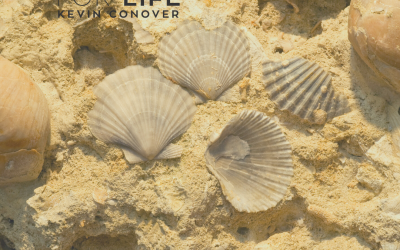Educate For Life Blog
Stinky Flowers?
What is a titan arum? The Corpse flower is one of the world's rarest flowers. It grows in Indonesia and its stalk can grow up to 15 feet tall and its bloom can be more than three feet wide! Even with this amazing size, the corpse flower is best known for its foul...
Hippocampus?
Do you know what a hippocampus is? That’s the scientific name for seahorse! This tiny and unique fish lives in the ocean and is called a seahorse because its head looks like a tiny horse. This unusual creature often pairs up and swims with another seahorse, and they...
Canyons on Mars?
How is a canyon formed and what can we learn from these massive erosion remnants? Due to record spring rainfall, water was diverted around the dam in Canyon Lake of Central Texas in the summer of 2002. This flood flow carved through solid bedrock resulting in a two...
Scriptural Scientists
Did you know by the 1960’s, Christianity was in full retreat in the United States? Bible colleges and seminaries were turning out pastors poorly prepared to defend the straightforward understanding of Genesis. Thus, everything the Bible says about biology and...
Fantastic Feet
Have you considered the human foot? It has a unique arch that allows man to stand upright. What does it take to make an arch? Think of the Gothic churches of the Middle Ages and their towering arches. Arches need wedge-shaped blocks, a keystone and ties. The human...
Busy Bees
What is one of the most busy and productive insects? The bee gets the prize hands down for its productivity in supplying a product for human consumption. Bees stay super busy and just to fly a bee has to flap its wings over 200 times per second. This ultra fast...
Young Planets?
Do the planets appear to be old? Neptune is an enormous gas planet, the eighth planet in our solar system. This planet appears as a small bluish dot in our most powerful telescopes. Our best photos of Neptune were taken by the Voyager II spacecraft when it flew by the...
Creatively Sharing the Gospel
Consider all of the creative ways to share the gospel! Back in 1909, a Canadian named Jack Miner set out to discover where birds migrate. He was the first person to begin banding ducks and geese in order to track their movements. Some years earlier, he had created...
Catastrophic Conclusion
Why are almost all marine fossils found on the continents and not in rock layers on the ocean floor? Fossils of sea creatures are found at the top of all the major mountain ranges, even the 20,000+ foot Himalaya Mountains. Where should these marine fossils be? One...
Sin Before the Fall?
How could thorns supposedly fossilize in rock layers before Adam and Eve existed? Fossilized thorns have been dug up in rock layers assumed to be 410 million years old by evolutionary paleontologists. This is a huge problem for Christians who have compromised and...
How Do We Interpret the Facts?
Do preconceived worldviews make a difference? It is inherent in human nature to view all things through the lens of what we believe to be reality or truth. The natural response to anything which falls outside of what we believe to be true is the rejection of the...
In the Balance
How are we able to balance? In order for humans to gracefully move around on two legs, they must have a greater sense of balance than those creatures moving on four legs. When a dog or cat walks on all fours, the center of balance is within the four points of...
Perspective Matters
Why does perspective matter? Many compromising believers claim it does not matter whether we believe God created recently or just started everything rolling billions of years ago. This parable illustrates why the truth matters. Years ago two boys lived with...
Battle of the Worldviews
Did you know there are only two possibilities for explaining the origin of everything? Here is just a partial list of the obvious contradictions between evolution and creation. The Evolutionary story which postulates the Sun came before Earth, dinosaurs evolved...
Planets with a Purpose
Have you considered why God made other planets besides earth? If other planets do not support life, why do they exist? First, the planets help confirm the passage of time. The moon and sun provide the primary chronology for time passage, but other planets provide a...
















